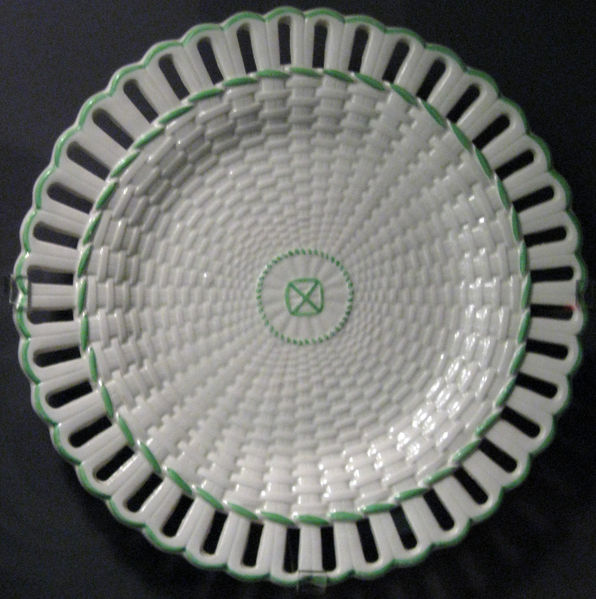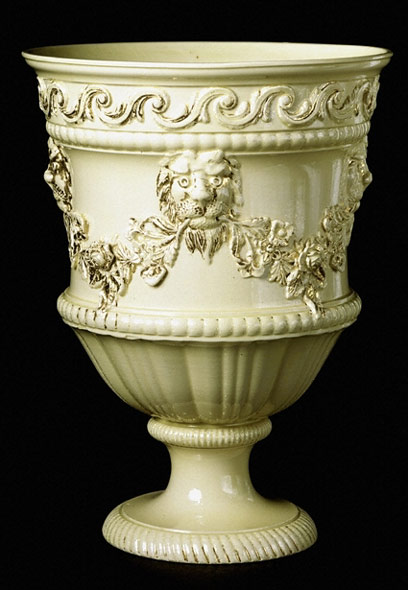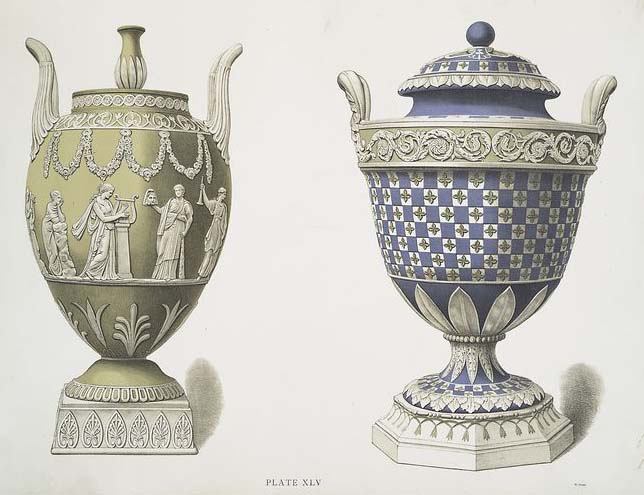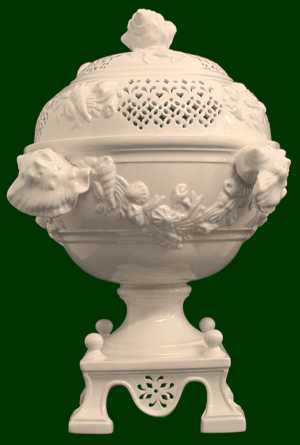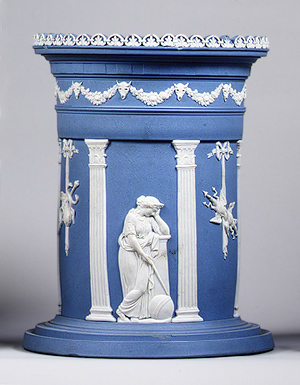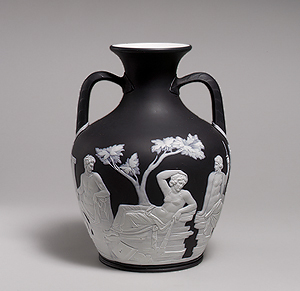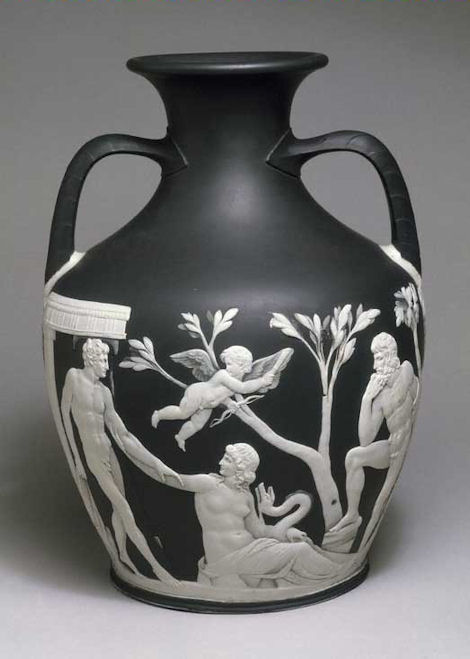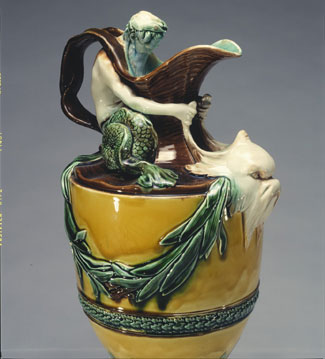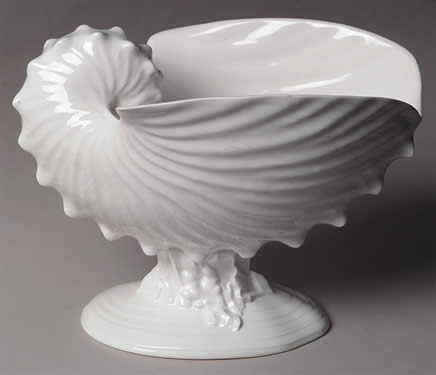<Back to Index>
- Philosopher Henry David Thoreau, 1817
- Potter Josiah Wedgwood, 1730
- Prince of Monaco Louis II, 1870
PAGE SPONSOR
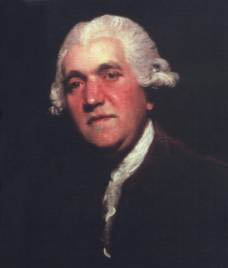
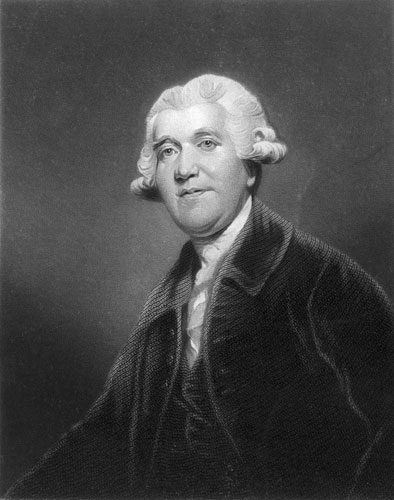
Josiah Wedgwood (12 July 1730 – 3 January 1795) was an English potter, founder of the Wedgwood company, credited with the industrialization of the manufacture of pottery. A prominent abolitionist, Wedgwood is remembered for his "Am I Not A Man And A Brother?" anti slavery medallion. He was a member of the Darwin – Wedgwood family. He was the grandfather of Charles Darwin and Emma Darwin.
Born in Burslem, Staffordshire, England, the twelfth and last child of Thomas Wedgwood and Mary Wedgwood (née Stringer; d. 1766), Josiah was raised within a family of English Dissenters. He survived a childhood bout of smallpox to serve as an apprentice potter under his eldest brother Thomas Wedgwood IV. Smallpox left Josiah with a permanently weakened knee, which made him unable to work the foot pedal of a potter's wheel. As a result, he concentrated from an early age on designing pottery rather than making it.
In his early twenties, Wedgwood began working with the most renowned English pottery maker of his day, Thomas Whieldon.
He began experimenting with a wide variety of pottery techniques, an
experimentation that coincided with the burgeoning of the nearby
industrial city of Manchester.
Inspired, Wedgwood leased the Ivy Works in his home town of Burslem.
Over the course of the next decade, his experimentation (and a
considerable injection of capital from his marriage to a richly endowed
distant cousin) transformed the sleepy artisan works into the first
true pottery factory. Wedgwood married Sarah Wedgwood (1734 – 1815), his third cousin, in January 1764. They had seven children. Josiah
worked in pottery, and his work was of very high quality. If he saw in
his workshop an offending vessel that failed to meet with his
standards, he would smash it with his stick, exclaiming, "This will not
do for Josiah Wedgwood!" He
was also keenly interested in the scientific advances of his day and it
was this interest that underpinned his adoption of its approach and
methods to revolutionize the quality of his pottery. His unique glazes
began to distinguish his wares from anything else on the market. He was
perhaps the most famous potter of all time. By 1763, he was receiving orders from the highest levels of the British nobility, including Queen Charlotte.
Wedgwood convinced her to let him name the line of pottery she had
purchased "Queen's Ware", and trumpeted the royal association in his
paperwork and stationery. In 1774, Empress Catherine of Russia ordered the Green Frog Service from Wedgwood; it can still be seen in the Hermitage Museum. An even earlier commission from Catherine was the Husk Service (1770), now on exhibit in Petergof. As a burgeoning industrialist, Wedgwood was a major backer of the Trent and Mersey Canal dug between the River Trent and River Mersey, during which time he became friends with Erasmus Darwin. Later that decade, his burgeoning business caused him to move from the smaller Ivy Works to the newly built Etruria Works, which would run for 180 years. The factory was so-named after the Etruria district of Italy, where black porcelain dating to Etruscan times
was being excavated. Wedgwood found this porcelain inspiring, and his
first major commercial success was its duplication with what he called
"Black Basalt". Not long after the new works opened, continuing trouble with his smallpox afflicted knee made necessary the amputation of his right leg. In 1780, his long time business partner Thomas Bentley died,
and Wedgwood turned to Darwin for help in running the business. As a
result of the close association that grew up between the Wedgwood and
Darwin families, Josiah's eldest daughter would later marry Erasmus'
son. One of the children of that marriage, Charles Darwin, would also marry a Wedgwood — Emma,
Josiah's granddaughter. This double barreled inheritance of Wedgwood's
money gave Charles Darwin the leisure time to formulate his theory of
evolution. In the latter part of his life, Wedgwood's obsession was to duplicate the Portland Vase,
a blue and white glass vase dating to the first century BC. For three
years he worked on the project, eventually producing what he considered
a satisfactory copy in 1789. After
passing on his company to his sons, Wedgwood died at home, probably of
cancer of the jaw, in 1795. He was buried three days later in the
parish church of Stoke-on-Trent. Seven years later a marble memorial
tablet commissioned by his sons was installed there. He
belonged to the fourth generation of a family of potters whose
traditional occupation continued through another five generations. Wedgwood's company is still a famous name in pottery today (as part of Waterford Wedgwood; see Waterford Crystal), and "Wedgwood China" is the commonly used term for his Jasperware, the blue (or sometimes green) china with overlaid white decoration, still common throughout the world. He was an active member of the Lunar Society often held at Erasmus Darwin House and is remembered on the Moonstones in Birmingham. He was elected to the Royal Society in 1783 for the development of a pyrometer. Wedgwood
is credited as the inventor of modern marketing, specifically direct
mail, money back guarantees, traveling salesmen, self service, free
delivery, buy one get one free, and illustrated catalogues. Wedgwood was a prominent slavery abolitionist. His friendship with Thomas Clarkson –
abolitionist campaigner and the first historian of the British
abolition movement – aroused his interest in slavery. Wedgwood mass
produced cameos depicting the seal for the Society for the Abolition of the Slave Trade and
had them widely distributed, which thereby became a popular and
celebrated image. The Wedgwood medallion was the most famous image of a
black person in all of 18th-century art. The actual design of the cameo was probably done by either William Hackwood or Henry Webber who were modellers in his Stoke-on-Trent factory. From
1787 until his death in 1795, Wedgwood actively participated in the
abolition of Slavery cause, and his Slave Medallion, which brought the
attention of the public to the horrors of the Slave trade, was very
effective in bringing public attention to abolition. Wedgwood
reproduced the design in a cameo with the black figure against a white
background and donated hundreds of these to the Society for
distribution. Thomas Clarkson wrote; "ladies wore them in bracelets,
and others had them fitted up in an ornamental manner as pins for their
hair. At length the taste for wearing them became general, and thus
fashion, which usually confines itself to worthless things, was seen
for once in the honourable office of promoting the cause of justice,
humanity and freedom". The design on the medallion became popular and was used elsewhere: large scale copies were painted to hang on walls and it was used on clay tobacco pipes.
A locomotive was named after Josiah Wedgwood and ran on the Churnet Valley Railway.

